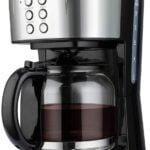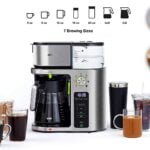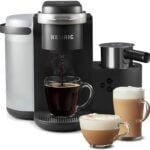The NCA Guide to Brewing Essentials
Coffee is private – the best method to make it’s the way you like it best.
That being said, mastering a couple of fundamentals will allow you to excellent your method. From here, we encourage you to experiment with different roasts, origins, or preparation methods. slots
Here are our tips to brew a basic cup of espresso.
The Equipment
Make sure that your instruments — from bean grinders and filters to espresso makers— are thoroughly cleaned after each use.
Rinse with clear, scorching water (or wipe down thoroughly), and dry with an absorbent towel. It’s essential to verify that no grounds have been left to collect and that there’s no build-up of coffee oil (caffeol), which can make future cups of coffee taste bitter and rancid.
If you’re using a single-serve espresso maker, examine our guide for preserving your machine in top shape.
The Beans
Great coffee begins with nice beans. The quality and taste of your coffee isn’t only decided by your favourite brewing course of, but in addition by the type of coffee you select. There could be a world of distinction between roasts, so take a look at our roasting sorts information.
Some of the flavor components include:
While there are lots of selections, remember that there’s no right or wrong — as an example, you probably can select a darkish, flavorful espresso roast espresso and still have it floor to be brewed in a drip system. Have enjoyable trying and having fun with totally different mixtures.
Freshness
Purchase espresso as quickly as possible after it’s roasted. Fresh-roasted espresso is important to a quality cup, so purchase your coffee in small quantities (ideally each one to 2 weeks). Check out our helpful tips on how to store coffee to maintain it as recent and flavorful as possible.
And please, by no means reuse your coffee grounds to make espresso. Once brewed, the fascinating coffee flavors have been extracted and only the bitter ones are left. Instead, take a look at these six methods to recycle your old grounds.
The Grind
If you purchase entire bean espresso, at all times grind your beans as close to the brew time as potential for optimum freshness. A burr or mill grinder is greatest as a end result of the espresso is ground to a constant size.
A blade grinder is much less preferable as a end result of some coffee shall be ground more finely than the remainder. If you normally grind your coffee at home with a blade grinder, strive having it ground on the store with a burr grinder – you’ll be surprised on the difference! (Whichever choice you utilize, all the time comply with manufacturers’ recommendations when utilizing your grinder, and be aware of any essential security considerations.)
The size of the grind is massively important to the style of your espresso. If your coffee tastes bitter, it might be over-extracted, or ground too fantastic. On the other hand, if your coffee tastes flat, it could be under-extracted, meaning your grind is simply too coarse.
(Check out this straightforward infographic to help you determine the the best texture on your most popular brewing technique.)
If you are having the espresso ground to order, inform the professionals the place you buy your espresso exactly how you will be brewing it. Will you be using a French Press? A flat or cone drip filter? A gold mesh filter? They will grind it particularly for your preparation methodology.
The Water
The water you use is essential to the quality of your espresso. Use filtered or bottled water in case your faucet water is not good or has a powerful odor or taste, corresponding to chlorine.
If you’re using faucet water, let it run a number of seconds before filling your espresso pot, and make sure to use cold water. Avoid distilled or softened water.
Coffee-to-Water Ratio
A common guideline is known as the “Golden Ratio” – one to 2 tablespoons of floor espresso for every six ounces of water. This can be adjusted to go properly with particular person taste preferences.
Check the cup lines or indicators on your specific brewer to see how they actually measure. And remember that some water is lost to evaporation in certain brewing strategies.
Water Temperature
Safety first! Of course, any time you might be working with heat and sizzling beverages, take all needed precautions for everyone from these preparing coffee, to those being served, and drinking espresso.
Your brewer should maintain a water temperature between 195 to 205 levels Fahrenheit for optimum extraction. Colder water will result in flat, under-extracted espresso, whereas water that is too sizzling will also trigger a loss of high quality in the style of the coffee. (However,chilly brewdoes not want any heat.)
If you’re brewing the coffee manually, let the water come to a full boil, but do not over boil. Turn off the heat supply and permit the water to relaxation a minute before pouring it over the grounds.
Coffee usually cools quickly after being served, depending upon the container from which it’s being served. And, many espresso drinkers may add cream or milk which also has a cooling effect. Ultimately, the temperature at which any particular person espresso drinker will favor their coffee is a private desire, like so many other things that make coffee special. These are a number of the explanation why it’s best to serve coffee proper after brewing, when it’s contemporary and hot. Cupping quality standards suggest brewing at200˚F. When serving scorching beverages, especially in retail or scientific care settings which present risks for burning or scalding, decrease temperatures ought to be considered. Coffee drinkers usually desire to add cold milk or cream, or simply permit the new beverage to cool to succeed in a comfortable temperature for ingesting.One studyhas proven that espresso drinkers typically drink their coffee at one hundred forty levels Fahrenheit or under.
Safety should all the time be a top precedence when making ready and serving any hot beverage, whether or not for yourself or for a customer. For industry-specific info, we encourage you to discover our Food Safety Plan Templates and Workplace Safety assets, and all the time seek the advice of with inside counsel before making any safety-related decisions, as NCA can’t give specific advice regarding any specific working environment or scenario.
Brewing Time
The amount of time that the water is in contact with the espresso grounds is another necessary taste factor.
In a drip system, the contact time should be roughly 5 minutes. If you make your espresso using a French Press, the contact time ought to be 2-4 minutes. Espresso has an particularly brief brew time — the coffee is in touch with the water for under seconds. Cold brew, on the opposite hand, ought to steep in a single day (about 12 hours).
If you’re not proud of the taste of the ultimate product, you’re likely either:
* Over-extracting- the brew time is simply too lengthy
* Under-extracting – the brew time is simply too quick
Experiment with the contact time until you get the right steadiness for your style.
Enjoy your coffee!
Prepared coffee begins to lose its optimum taste moments after brewing, so only make as a lot coffee as you’ll drink. Otherwise, coffee could be poured right into a warmed, insulated thermos to be consumed inside an hour.
(Don’t worry – old coffee in all probability is not harmful, just not very interesting. Always use your finest judgement earlier than ingesting something, no matter what you read on the Internet.)
Try to enjoy your espresso as thoughtfully as it was ready – take in the aroma, and see the flavors in each sip. Many individuals have been instrumental in bringing it to your cup.




